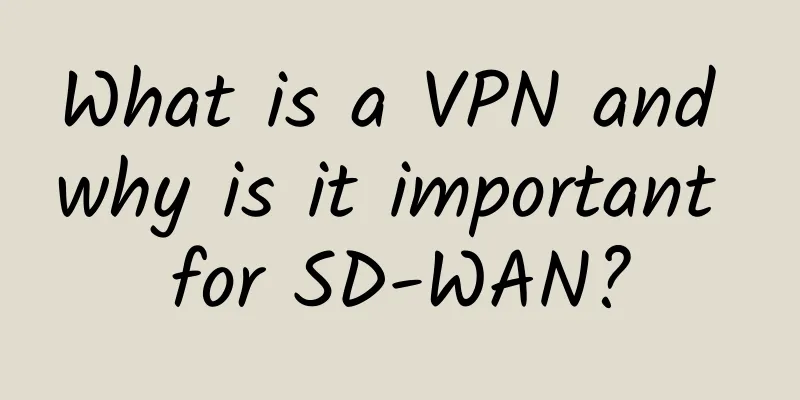Countries are competing to deploy 6G commercial services, and South Korea is ahead of the United States and Japan to seize the opportunity

|
After becoming the first country in the world to officially announce the commercialization of 5G, South Korea is going to seize the lead in the commercialization of 6G? Recently, South Korea announced its development goals in the 6G field: it plans to launch a 6G pilot in 2026 and officially realize 6G commercial use in 2028. It is worth noting that this timetable is obviously two years faster than the United States and Japan's previous plan to commercialize 6G in 2030. To this end, the South Korean government will invest 220 billion won (about 1.24 billion yuan) in the basic technology research and development of 6G between 2021 and 2025. On April 3, 2019, South Korea was the first country in the world to announce the commercial use of 5G. Subsequently, other major countries such as China, the United States, and the United Kingdom followed suit, and the global 5G commercial era was fully opened. Looking around the world, at a time when 5G technology has not yet been fully popularized, why does South Korea want to "compete for the world's first" in 6G? South Korea's Minister of Science, Technology and ICT Lim Hye-sook once said that after 5G began to be commercialized, countries around the world have shifted their goals to the research and development and standardization of 6G. "This time, it is just that (South Korea) has further proposed a specific plan and budget for the development of 6G." Huang Fei, professor and director of the Seoul Institute of Science, told the First Financial reporter that the reason why South Korea is considering hastily launching 6G before fully popularizing 5G is mainly because the era of artificial intelligence and big data has arrived, and all parties have been pursuing faster delays with smaller errors. Huang Fei also pointed out that the 6G research and development strategy announced by South Korea this time can be described as "alliances and coalitions." In order to ensure the next generation of core original technologies, South Korea will invest 200 billion won in ten strategic technologies in six key areas, including low-orbit communication satellites and ultra-precision network technology, and jointly promote research and cooperation projects with the United States, China, Finland and other countries. 5G is not yet popularThe Ministry of Science and ICT of South Korea said that since the launch of 5G commercial services, the number of 5G users in South Korea has continued to increase, reaching nearly 16 million at the end of May, and the proportion of 5G users in South Korea's mobile communication users has further increased to 22%. South Korea currently has a total of 71.45 million mobile communication users. Huang Fei believes that it took South Korea two years to reach a 5G penetration rate of just over one-fifth, which is not ahead of China. "Although China's 5G commercialization is later than South Korea, as of April 2021, the scale of 5G users of China's three major operators has exceeded 400 million, and the 5G penetration rate has reached about 26%. In terms of proportion, China has already caught up," said Huang Fei. Among the three major telecom operators in South Korea, SK Telecom has the most 5G users, with 7.39 million; KT and LG U+ have 4.8 million and 3.6 million 5G users, respectively. In terms of download speed, the current 5G speed in South Korea is 656.6 Mbps, which is three times faster than the speed of 4G (158.5 Mbps). Among them, SK has the fastest download speed of 788.97Mbps, followed by KT at 652.1Mbps, and LG U+ has the slowest speed of 528.6Mbps. On June 24, the latest report released by RootMetrics under IHS Markit showed that although countries around the world are working hard to improve the performance of their 5G networks, South Korea is still leading the race. Among them, Seoul's 5G availability can reach 95.2%, far exceeding New York (74.1%), London (43.7%) and Zurich (45.6%). However, for more than two years, South Korea's 5G commercialization has been moving forward with bumps and bumps. According to Korean media reports, recently, due to dissatisfaction with the quality of the 5G network provided, about 520 Korean users launched a class action lawsuit and took South Korea's three major telecom operators to court. The reason is that the three major telecom operators provided incomplete 5G services, resulting in low 5G network quality. South Korea's Ministry of Science and ICT conducted an assessment of Seoul and six other major cities and found that users need to rely on 4G to download 5G content for an average of about 6% of the time. Moreover, 5G network coverage is limited in closed indoor environments. "In terms of the speed of 5G popularization, it can be said that Korean consumers are relatively active in trying new things. Although at first, due to the delay in the deployment of 5G base stations, many users reported that they could not connect to 5G in some areas and could not enjoy the pleasure of surfing the 5G network," Huang Fei said, "However, with the update and improvement of infrastructure such as base stations and mobile phone terminals, Korea's 5G experience has improved greatly." Huang Fei said that Korean consumers are very sensitive to false or exaggerated propaganda. "As the first country to try out 5G, Korea's 5G commercialization process, from formulating 5G packages to realizing value-added services, can provide some good reference for other countries." 6G is not far away?How much faster will 6G be compared to 5G? Last July, South Korean technology company Samsung released a white paper titled "6G Next Generation Hyperconnected Experience". The white paper covers all aspects related to 6G, including major trends in technology and society, new services, requirements, candidate technologies, and expected standardization schedules, outlining Samsung's vision for 6G. Comparison of key indicators of 5G and 6G (from Samsung report) Samsung defines three categories of requirements that must be met to implement 6G services: performance, architecture, and trustworthiness. In terms of performance, examples of 6G performance requirements are a peak data rate of 1000 Gbps and an air latency of less than 100 microseconds (μs), which is 50 times the peak data rate of 5G and one-tenth the latency of 5G. Huang Fei believes that it is still unclear how much faster 6G, which is still in the initial stage of research, will be than 5G. "But if the network delay can be one-tenth of 5G, this speed can support the development of many future industries and enable many data transmission and processing to be realized in real time, such as real-time traffic signal management, route navigation, unmanned driving, smart city management, smart medical appointments and artificial intelligence diagnosis and treatment." In August 2020, South Korea released the "Future Mobile Communications R&D Strategy to Lead the 6G Era", focusing on the layout of 6G international standards and strengthening the construction of the industrial ecosystem, aiming to ensure that South Korea becomes the world's first 6G commercial country after 5G, and identified five pilot areas: digital healthcare, immersive content, autonomous vehicles, smart cities and smart factories.
Citizens board Baidu's self-driving taxi at the designated pick-up point on Daoxianghu Road, Haidian District, Beijing According to the current situation, network speed and delay error directly affect the speed and accuracy of artificial intelligence and big data processing. As countries around the world are conducting driverless research one after another, the right to speak on 6G standards is obviously very important. South Korea was a bit behind in launching 6G R&D, following China, the US, Finland and other countries. However, South Korea obviously does not want to passively accept the formulation of international standards. It is expected that there will be more discussions on standard setting after the international cooperation on 6G is fully launched in the next few years. It can be said that the South Korean government and enterprises are quite forward-looking in preparing for a rainy day from now on. Data processing capabilities are the main driving force of the future economy. 6G will have a revolutionary impact on human life just like 5G. Huang Fei believes that the fact that South Korea's population is mainly concentrated in large cities is conducive to the layout of base stations. Coupled with the technological advantages accumulated by Samsung, these are the key factors in ensuring that South Korea is in the leading position in the field of 5G commercialization. These factors are also conducive to South Korea's development of 6G commercialization. Sunghyun Choi, senior vice president of Samsung Research Institute and head of the Advanced Communications Research Center, once said that 5G commercialization is still in its infancy and it is never too early to prepare for 6G because it usually takes about 10 years from the start of research to the commercialization of a new generation of communication technology. In order to seize the commanding heights of 6G technology, countries around the world are now competing to make their plans.
On July 8, visitors experienced the simulated autonomous driving function of a smart cockpit at the exhibition site of the World Artificial Intelligence Conference. In November 2019, the Ministry of Science and Technology of China, together with the National Development and Reform Commission, the Ministry of Education, the Ministry of Industry and Information Technology, the Chinese Academy of Sciences, and the National Natural Science Foundation of China, organized a 6G technology research and development launch meeting in Beijing, established a national 6G technology research and development promotion working group and an overall expert group, and China's 6G research and development was officially launched. On May 12 this year, Liu Liehong, member of the Party Leadership Group and Vice Minister of the Ministry of Industry and Information Technology of China, presided over a special meeting on 5G/6G, requiring in-depth research on 6G application scenarios; at the same time, efforts were made to promote innovative breakthroughs in key technologies, focusing on 6G potential technologies such as terahertz communications, integrated communications and perception, and the integration of communications and artificial intelligence, and strive to make major breakthroughs in key core technologies. The United States has launched a research program on "Resilient and Intelligent Next Generation (NextG) Wireless Broadband Networks"; Finland's Nokia and Sweden's Ericsson have led the establishment of the Hexa-X Alliance, which is funded by the EU's scientific research framework program "Horizon 2020" research and innovation program; Finland's University of Oulu has teamed up with experts from industry and universities in many countries to establish the "6G Flagship" organization, which is committed to the preliminary research of 6G communication technology; Japan has formulated a B5G development roadmap and cooperated with the United States to invest US$4.5 billion in B5G/6G technology research and development. As Samsung wrote in its white paper, the evolution of mobile communication systems from 2G to 5G took several generations, and each generation took a big step forward, going through two major processes from the formulation of technical standards and visions to actual deployment. It took 15 years from 3G to 4G, and 12 years from 4G to 5G; so, will it take 8 years from 5G to 6G, or even less? |
Recommend
Can't connect to Wi-Fi? Tsinghua University has developed the "ultimate solution"
While Wi-Fi is one of the greatest inventions of ...
Wi-Fi vs. Ethernet: Which should you use and why?
Not long ago, you had to choose between a wired o...
Juniper Networks MIST AI network solution gives network engineers "superpowers"!
[51CTO.com original article] Under the night, the...
Work together to build a secure network and digital ecosystem
Today, digital transformation led by emerging tec...
[12.12] Megalayer: 399 yuan/month-E3-1230/8GB/240G SSD or 1TB HDD/15M/Hong Kong server
Megalayer has launched a special Double 12 event....
Four indicators to help you choose the best multi-service data center provider
A new report from MarketsandMarkets predicts that...
Xi'an Yimatong previously reported: It took two days and two nights to optimize a 1M image to 100kb
Xi'an's health code crashed twice in a ro...
A topic worth pondering: Will the birth of Wi-Fi 7 replace 5G networks?
In recent years, wireless technology has develop...
Hostodo: Las Vegas/Miami NVMe hard drive VPS from $19.99 per year
Hostodo is a foreign VPS hosting company founded ...
5 reasons why DevOps will be a big thing in 2018
DevOps has been a hot topic for a few years now. ...
The embarrassing 400G: When will the operator backbone network be commercially available?
400G backbone network, a term that has not yet ar...
Black technology! Disruptor! Blockchain, it’s too late if you don’t pay attention to it
In 2008, the concept of blockchain emerged. This ...
How long can Huawei's enterprise business maintain such high growth in performance?
The beginning of 2018 In his New Year's Day m...
The speed of light leads the future: Hubei Sports Vocational College upgrades its all-optical network
As a sports vocational college integrating sports...
What is active monitoring without embedding code? Technology exploration behind improving user experience
In the Internet age, whoever controls the users c...






![[Important Event] Be neither arrogant nor give up, stick to the original intention, the 2023 Jinrui Marketing Award works collection is officially launched](/upload/images/67eb84d7c8fe9.webp)


